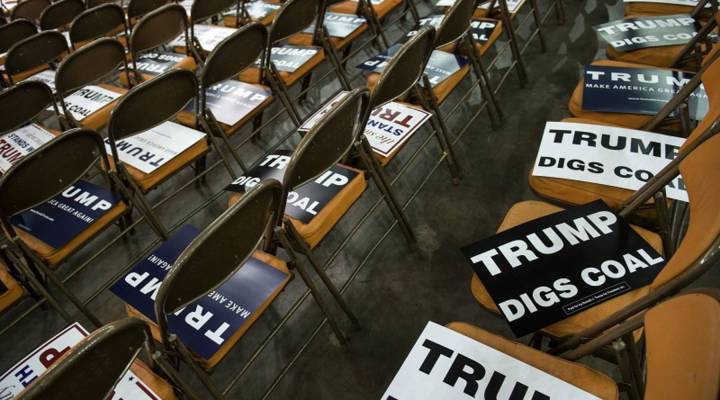
Coal mining jobs in West Virginia aren’t coming back

West Virginia holds its primary Tuesday amid another war of words over coal mining. Democratic front-runner Hillary Clinton has said, “We’re going to put a lot of coal miners out of business.” And Republican Donald Trump recently retorted, “We’re going to put the miners back to work.”
The reality of the market, however, suggests many West Virginia mining jobs — whoever is president — will never come back.
For West Virginia coal, cheap and efficient natural gas is leaving it behind as a fuel for generating electricity. Many analysts project natural gas could remain in the range of $5 per unit of energy longer term.
“Forget the clean power plan. You cannot build a coal plant that meets existing regulation today that can compete with $5 gas,” Charles Patton, president of Charleston-based Appalachian Power, told a state energy conference recently. “It just cannot happen.”

The reality has pushed four of the top five coal producers in the country into bankruptcy proceedings. But let’s imagine natural gas somehow struggles. Energy markets are, after all, volatile. The problem is, U.S. demand for electricity in general is soft.
“In fact, it’s been almost flat demand since the Great Recession,” said energy economist Robert Godby of the University of Wyoming, “due to LED light bulbs, a lot of energy efficiencies. Also, the structural changes that are going on in the American economy. We don’t have as much manufacturing and high electricity demand sectors as in the past.”
Let’s imagine, again, coal prices still manage to rise. The eastern mines would still struggle to recover.
“The coal seams are just getting thinner, so that means productivity is declining,” said Ted Boettner of the West Virginia Center on Budget Policy. “So we can’t produce as much coal with the same amount of people. We’re just getting outcompeted by places like in Illinois and out west.”
Related: Where will out-of-work coal miners go? In West Virginia, it’s not clear.
There’s a lot happening in the world. Through it all, Marketplace is here for you.
You rely on Marketplace to break down the world’s events and tell you how it affects you in a fact-based, approachable way. We rely on your financial support to keep making that possible.
Your donation today powers the independent journalism that you rely on. For just $5/month, you can help sustain Marketplace so we can keep reporting on the things that matter to you.


















